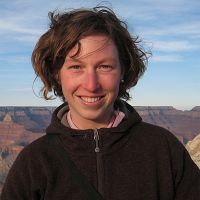Heindel, et al. 2020
Atmospheric dust deposition varies by season and elevation in the Colorado Front Range, USA
Heindel, RC, Putman, AL, Murphy, SF, Repert, DA, and Hinckley, ES (2020)
JGR-Earth Surface 125, e2019JF005436
-
Boulder, INVESTIGATOR
-
Boulder, Luquillo, INVESTIGATOR
-
Boulder, INVESTIGATOR
Plain English Summary
Atmospheric dust deposition can be an important source of nutrients and pollutants to ecosystems and has been responsible for changes in ecosystem productivity and biodiversity. Currently, dust activity is increasing across the southwestern United States due to land use change and drought. Many questions remain about how the amount and chemical composition of dust varies throughout the year and across mountainous terrain. Over 1 year and at nine sites, we measured the amount and chemical composition of dust deposited to the Colorado Front Range. We found that during the summer, there was more dust deposited at lower elevations, which are close to urban and agricultural dust sources. In addition, the dust contained high levels of the nutrient phosphorus and many metals that are associated with anthropogenic emissions. Our results suggest that anthropogenic dust is transported up into the mountains, where it could influence ecosystem biodiversity and water quality. Given the growing evidence that the Southwest is becoming dustier, we call for more comprehensive dust monitoring and land management practices that work to limit dust emissions.
Abstract
As atmospheric dust deposition continues to increase across the southwestern United States, it has the potential to alter ecosystem productivity and structure by delivering nutrients, base cations, and pollutants to remote mountain sites. Due to the sparse distribution of dust monitoring sites, open questions remain about the spatial and temporal variability of dust fluxes and composition across mountainous terrain. We present a 1 year (November 2017 to November 2018) record of seasonal dust fluxes and composition from an elevation transect across the Colorado Front Range extending from the urban plains to the remote alpine. At all nine sites, dust was enriched in the essential nutrient phosphorus and the metals copper, zinc, lead, and cadmium, elements that are enriched in dust deposited at sites across the Rocky Mountain West. We observed a seasonal pattern in dust composition, with the highest concentrations of zinc and cadmium during the summer, when back trajectory modeling suggested a greater contribution of dust from local urban and agricultural regions to the east of the collection sites. During the summer, there was also a trend of higher dust fluxes at lower elevations; dust fluxes ranged from 18.9 ± 0.1 g m−2 yr−1 on the plains to 5.9 ± 0.2 gm−2 yr−1 in the alpine. Our results suggest that urban and agricultural land east of the Colorado Front Range is an important source of nutrients and pollutants to all elevations of the mountain range.
Citation
Heindel, RC, Putman, AL, Murphy, SF, Repert, DA, and Hinckley, ES (2020): Atmospheric dust deposition varies by season and elevation in the Colorado Front Range, USA. JGR-Earth Surface 125, e2019JF005436.
 This Paper/Book acknowledges NSF CZO grant support.
This Paper/Book acknowledges NSF CZO grant support.
Explore Further



